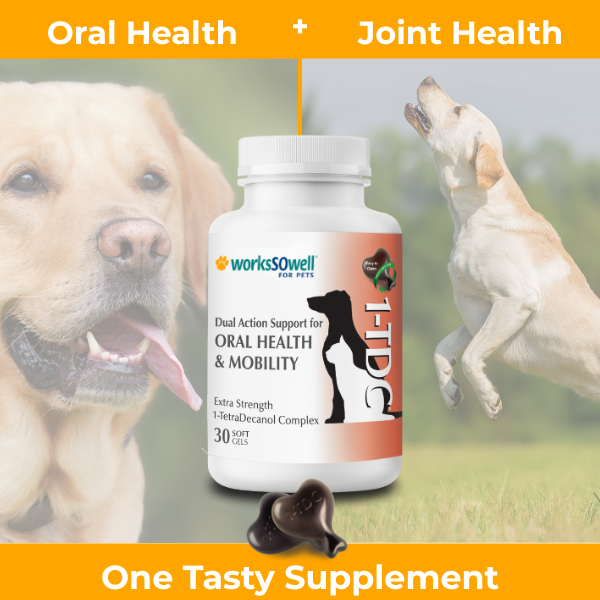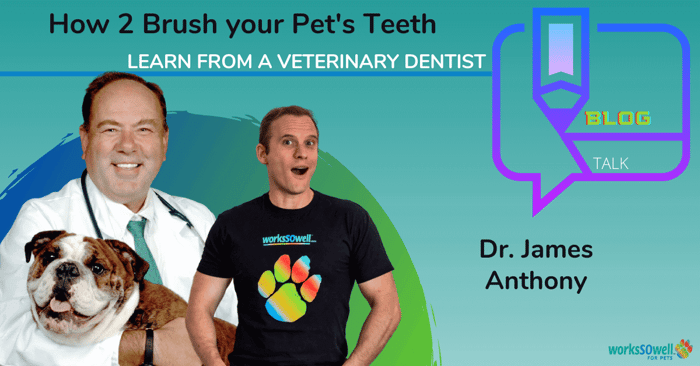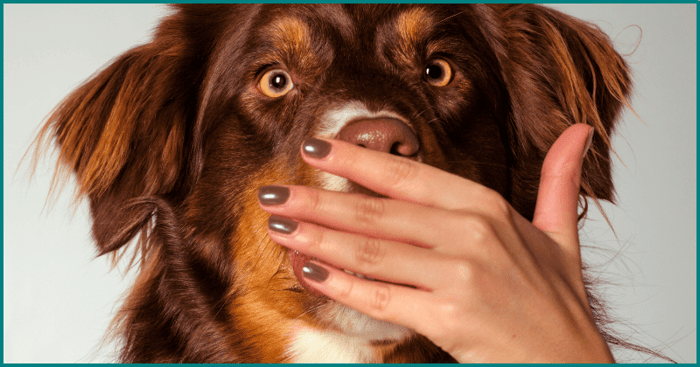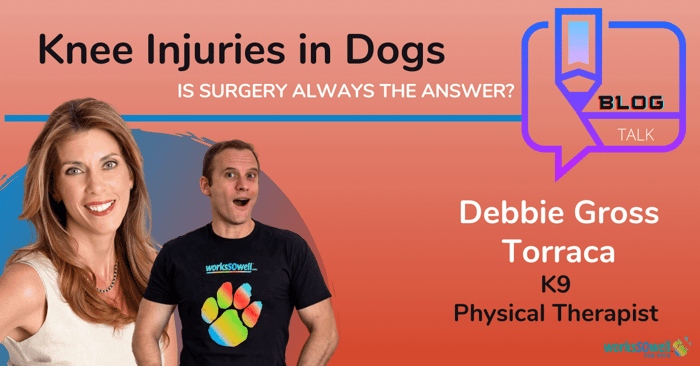How to Brush Your Dog’s Teeth
How to brush your Dog's teeth? 80% of cats and dogs by the age of three have some form of oral health issues. You’ve been told to brush their teeth as the gold standard, but did you know that less than 3% of us do it? Why? Because it can seem like a real daunting task.
In this interview, you are going to learn how to properly brush your pet’s teeth directly from a veterinary dentist! With over 30 years of experience, Dr. James Anthony knows all the ins and outs of navigating through this daily routine.
See the full interview with Dr. Anthony
Introduction to Dr. Anthony

Dr. James Anthony is a pioneer in the field of veterinary dentistry and oral surgery almost 40 years ago. There are only about 200 dentists in the field currently.
Dr. Anthony’s patients are typically dogs and cats, but he’s also worked with a lot of zoos, seeing vampire bats to killer whales and anything in between.
Working on the killer whale was fascinating. First, you let the killer whale gain confidence in you as a person, which takes months. They’re not under anesthetic because they’ll die, so you have to do everything while they’re awake. If you have a wide open mouth, you want to make sure the two of you trust each other because otherwise you are a fly in front of a frog.
Brushing Your Pet’s Teeth
80% of cats and dogs have some form of periodontal disease in the mouth. When we think of brushing teeth, most pet owners aren’t doing it frequently, or frequently enough.
You have to get an appropriate-sized brush for the size of your pet. If you have a large or medium-sized dog, you should purchase an adult soft bristled toothbrush. For a smaller breed dog, a child-sized soft-bristled brush. For tiny dogs, use a proxabrush, which is a brush you use for feeding orthodontic braces in people.
You have to brush your pet’s teeth daily in order to make a real impact. Two to three times a week is better than nothing, but it won’t be great. So this really should be a part of your daily routine just in the way you brush your own teeth daily.
Dr. Anthony did a research project many years ago on the effect of brushing. They brushed twice a week. There was some benefit but not as much as if they brushed every day. The difference was a 50% improvement.
The method of brushing is key. In the human field, there are 12 brushing methods. The most effective brushing method for plaque removal will ultimately cause damage to teeth after 30-40 years, but since pets don’t live that long, you can get away with it with your pet. It’s called the sulcular method. You put the toothbrush head at a 45-degree angle to the gum and horizontally go back and forth.
You want to start brushing your pet’s teeth as early as possible. With a puppy or kitten, start rubbing your finger around their mouth so they get used to the idea. If you don’t introduce it early enough with your pet, they won’t let you do it, and it could be dangerous to you. But most animals will allow this to happen.
Even if you start later, just get them used to getting something in their mouth, then introduce them to the taste of toothpaste, and then introduce them to the brush, gently.
After two to three weeks of brushing regularly every day, you can then add the pressure of the brush to brush their teeth as hard as you would brush your own.
If you brush your pet’s teeth effectively every day, the pet’s mouth will be about 95% clean. It’s removing the plaque on the teeth that create the volatile sulfur particles, which are what cause bad breath. Redness of the gums is what accumulated biofilm causes by releasing irritational sources that will stimulate the body’s inflammation or gingivitis. This can be destructive for the supportive structures of the teeth. Brushing is a major way to prevent that from happening.
Another tremendous aid is 1-TDC as it promotes healthy inflammatory responses in your dog's gums. Veterinary Dentist highly recommend dentist for virtually all patients.
An important note is that you should not use human toothpaste. There are a lot of chemicals that can cause problems with your pets because of their tendency to swallow everything.
You should try to brush the whole mouth if possible. However, if your pet isn’t cooperative there, don’t push their buttons. You will likely get hurt, or your pets will hate the whole process.
If you can brush more than the outside of their teeth, do it, but if not, you are still covering a significant portion of the mouth.
To perform a good oral brushing, this should not take more than 30-60 seconds. If you’re taking longer than that, you’re doing something wrong. Be consistent about the time at and the format with which you brush their teeth in order to form a habit for both you and the pet and an experience that they can look forward to. And you can change your dog’s toothbrush as frequently as you change your own toothbrush.
Brushless sprays are about 20-30% effective. Brushing is 95% effective. A water additive that is Xylitol-based in small quantities is 20-30% effective. Other organic water additives are about 65% effective for plaque removal. Visit VOHC’s (Veterinary Oral Health Council) website for seals of approval on which products are safe in this vein.
Some people can’t brush because they have arthritis in their hands. Your veterinarian can help customize a home care program for you in cases like this, such as brushless sprays, water additives, or dental diets that focus on teeth maintenance. There are over 2,000-related dental benefit products on the market throughout North America. Most of them are useless, so consult your vet on what they would recommend.
We have over 300 types of bacteria in our mouth, even after we just brushed our teeth. Within 30 minutes, you’re getting a biofilm attached to your teeth. That’s why brushing to get rid of it is so important.
However, we used to think that those bacteria caused the inflammation of the gums. We now know that it is the body's reaction to the bacteria that causes inflammation which can lead to tissue and bone destruction. Therefore it is critical to mediate your pet's inflammation in the mouth by brushing the teeth and or using effective home care solutions to keep your pet's mouth healthy and happy.
Additional Resources
● Dr. Anthony’s Dog Oral Health Guide
● Veterinary Oral Health Council
1-TDC Oral Health + Mobility Support for Dogs

$33.00
Keep your pet Happy, Active & Comfortable from Head-to-Tail with 1-TDC. This unique supplement is SO effective that it is recommended by TOP Veterinary Experts worldwide to maintain and improve your pet’s health in 4 important areas: Oral Health….… read more









